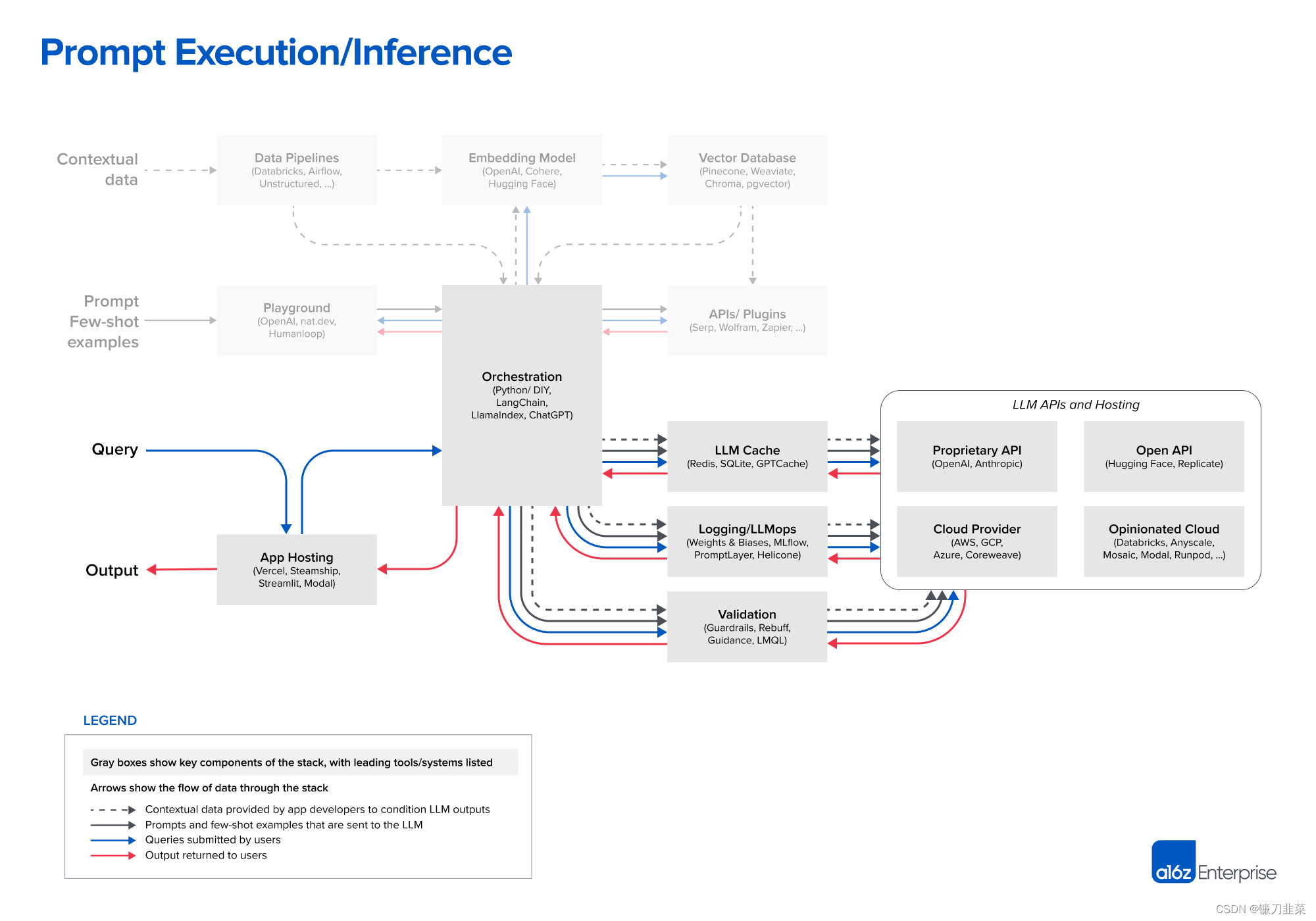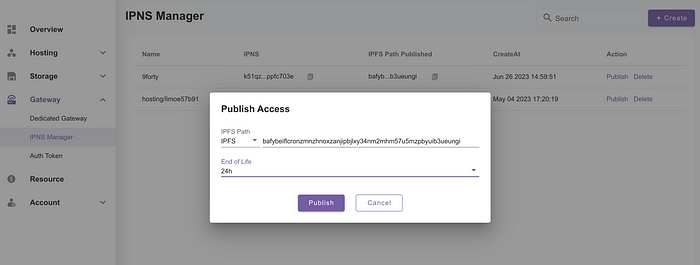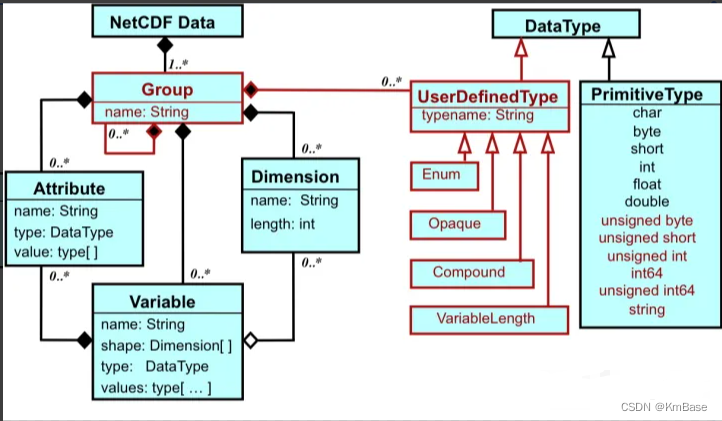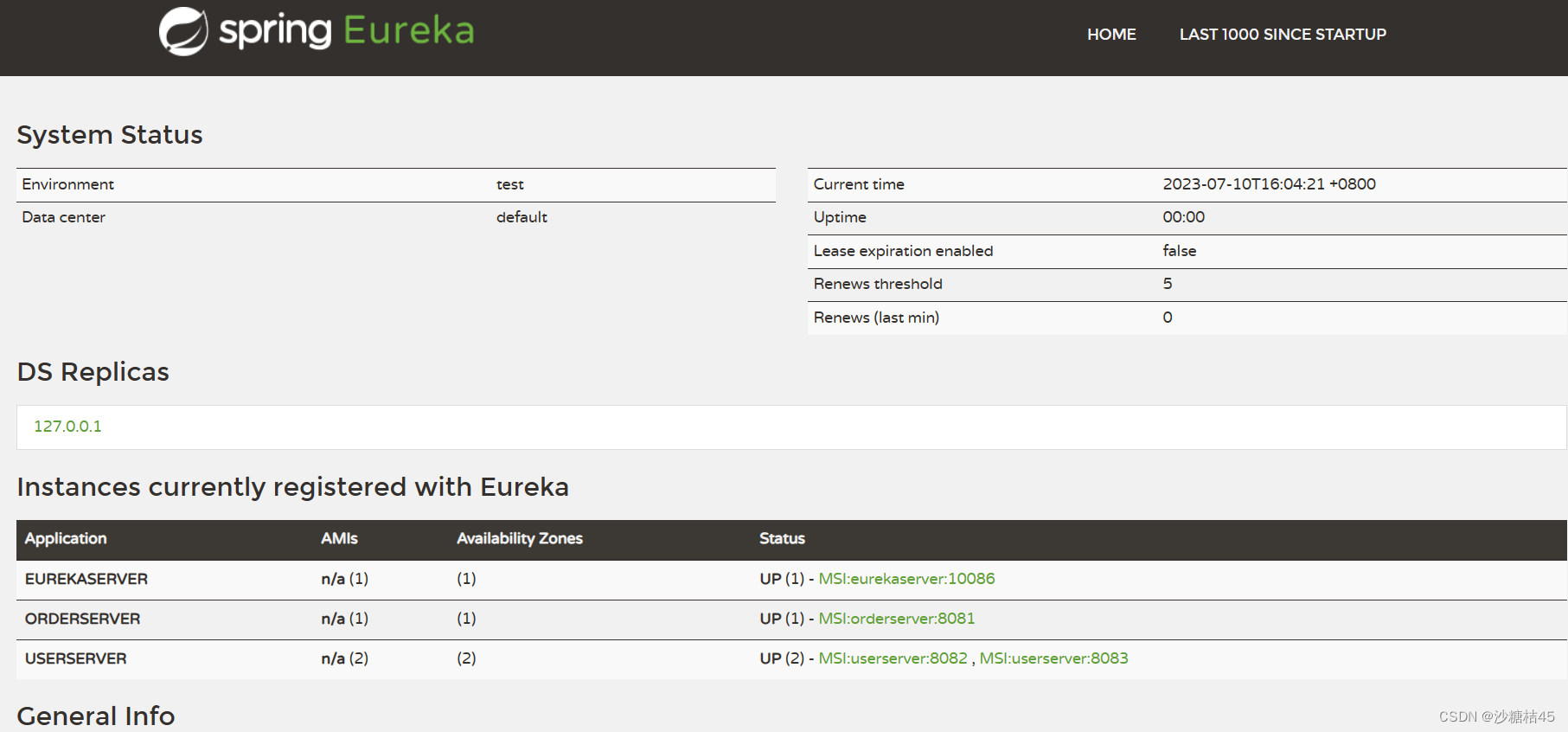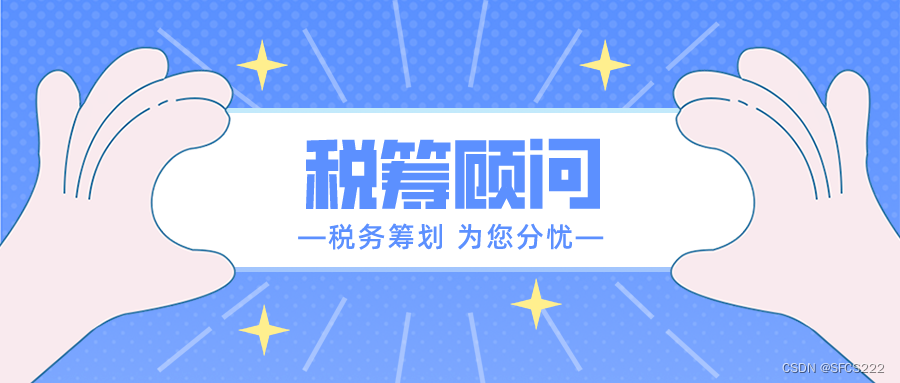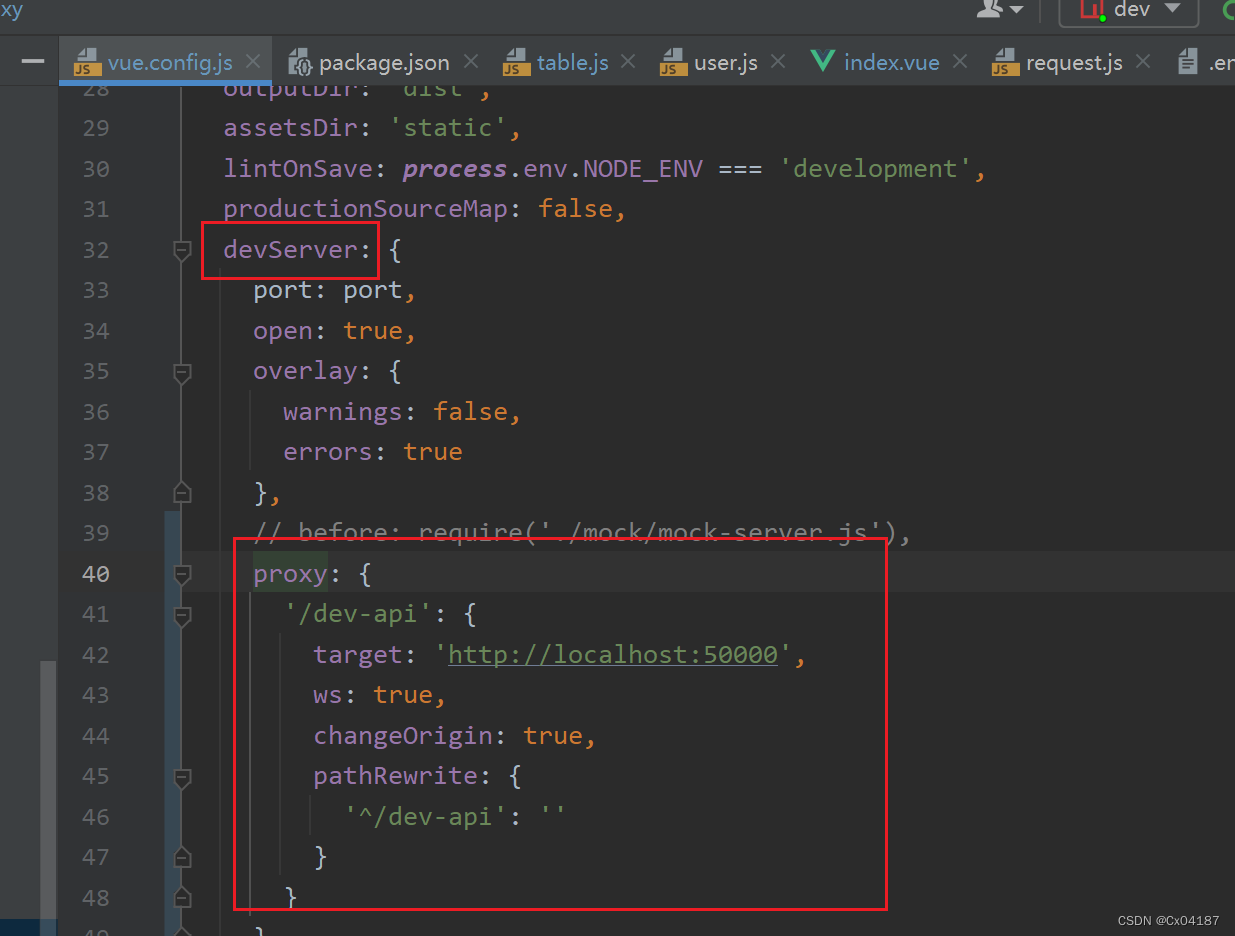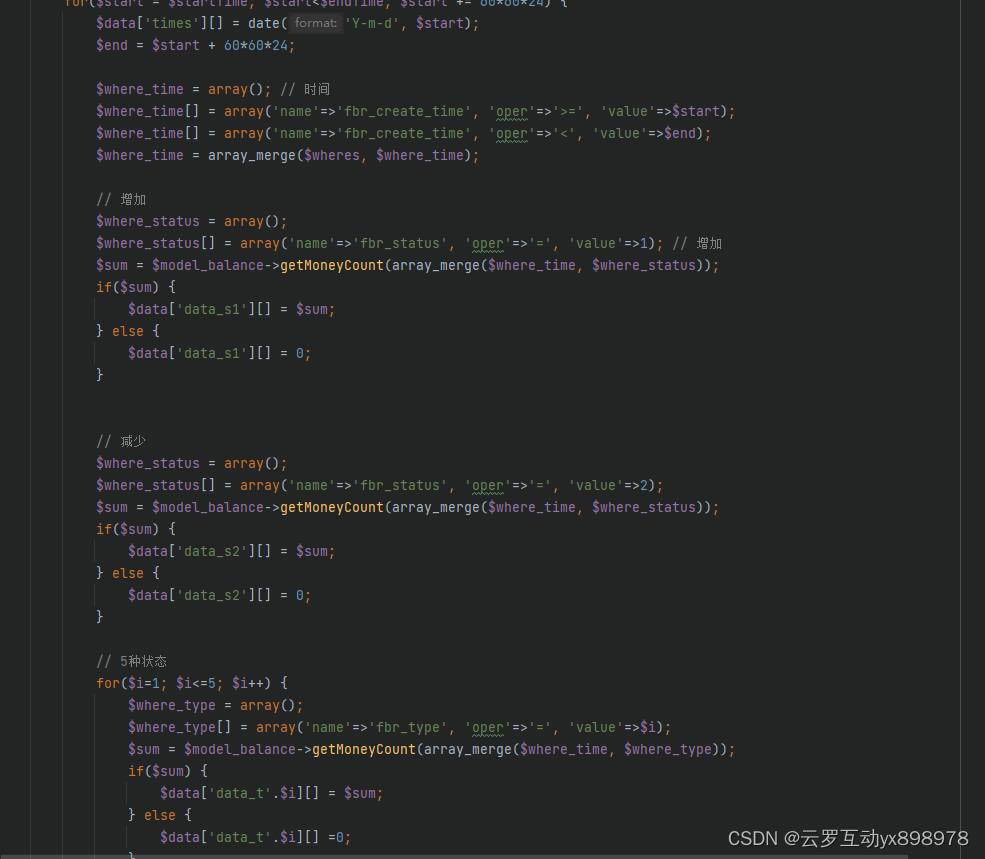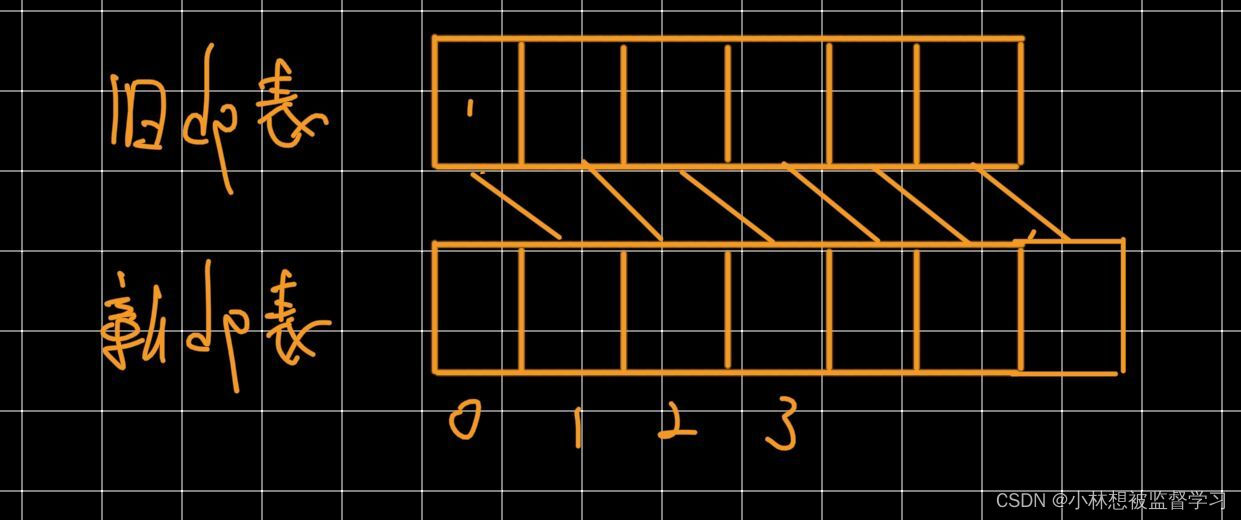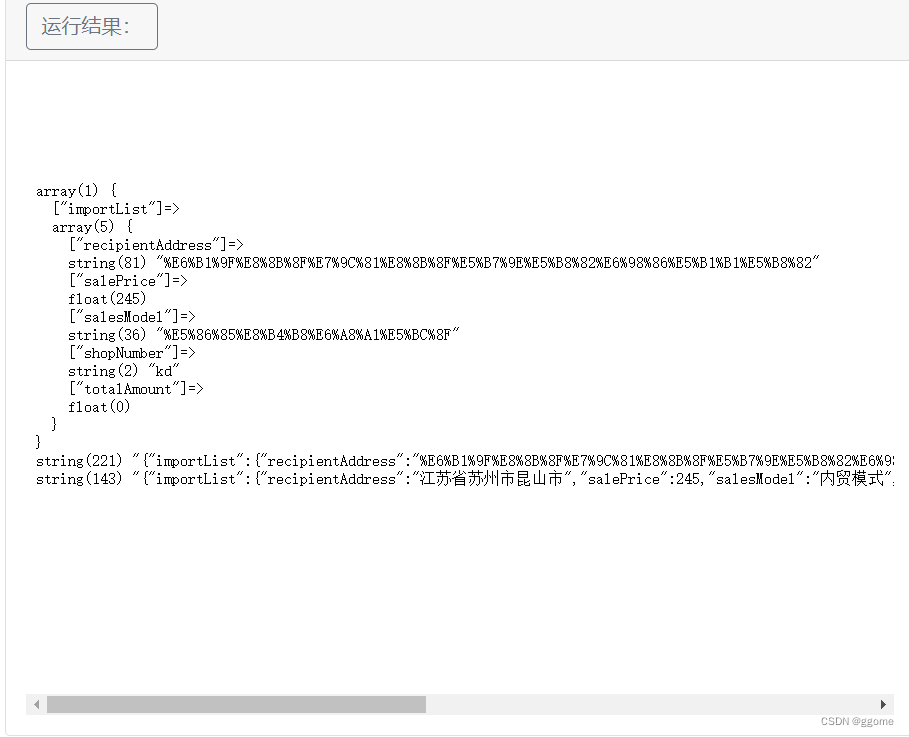
目录
使用Class作为线程对象锁
使用自定义对象作为线程对象锁
死锁及解决方案
线程并发协作(生产者/消费者模式)
实现生产者与消费者模式
使用Class作为线程对象锁
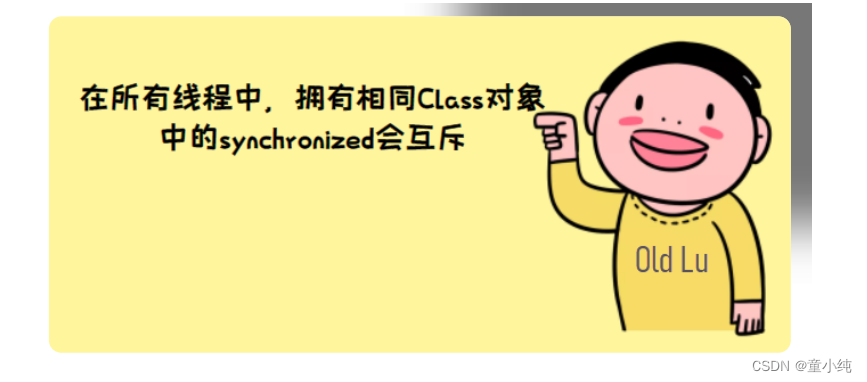
语法结构:
synchronized(XX.class){
//同步代码
}或
synchronized public static void accessVal()/**
* 定义销售员工类
*/
class Sale{
private String name;
public Sale(String name){
this.name = name;
}
/**
* 领取奖金
*/
synchronized public static void money(){
try {
System.out.println(Thread.currentThread().getName() + " 被领导表扬");
Thread.sleep(500);
System.out.println(Thread.currentThread().getName() + " 拿钱");
Thread.sleep(500);
System.out.println(Thread.currentThread().getName() + " 对公司表示感谢");
Thread.sleep(500);
System.out.println(Thread.currentThread().getName() + " 开开心心的拿钱走人");
} catch (InterruptedExceptione) {
e.printStackTrace();
}
}
}
class Programmer{
private String name;
public Programmer(String name){
this.name = name;
}
/**
* 打开电脑
*/
synchronized public void computer(){
try {
System.out.println(this.name + " 接通电源");
Thread.sleep(500);
System.out.println(this.name + " 按开机按键");
Thread.sleep(500);
System.out.println(this.name + " 系统启动中");
Thread.sleep(500);
System.out.println(this.name + " 系统启动成功");
} catch (InterruptedExceptione) {
e.printStackTrace();
}
}
/**
* 编码
*/
synchronized public void coding(){
try {
System.out.println(this.name + " 双击Idea");
Thread.sleep(500);
System.out.println(this.name + " Idea启动完毕");
Thread.sleep(500);
System.out.println(this.name + " 开开心心的写代码");
} catch (InterruptedExceptione) {
e.printStackTrace();
}
}
/**
* 去卫生间
*/
public void wc(){
synchronized ("suibian") {
try {
System.out.println(this.name + " 打开卫生间门");
Thread.sleep(500);
System.out.println(this.name + " 开始排泄");
Thread.sleep(500);
System.out.println(this.name + " 冲水");
Thread.sleep(500);System.out.println(this.name + " 离开卫生间");
} catch (InterruptedExceptione) {
e.printStackTrace();
}
}
}
/**
* 领取奖金
*/
public void money(){
synchronized (Programmer.class) {
try {
System.out.println(this.name + " 被领导表扬");
Thread.sleep(500);
System.out.println(this.name + " 拿钱");
Thread.sleep(500);
System.out.println(this.name + " 对公司表示感谢");
Thread.sleep(500);
System.out.println(this.name + " 开开心心的拿钱走人");
} catch (InterruptedExceptione) {
e.printStackTrace();
}
}
}
}
/**
* 打开电脑的工作线程
*/
class Working1 extends Thread{
private Programmer p;
public Working1(Programmer p){
this.p = p;
}
@Override
public void run() {
this.p.computer();
}
}
/**
* 编写代码的工作线程
*/
class Working2 extends Thread{
private Programmer p;
public Working2(Programmer p){
this.p = p;
}
@Override
public void run() {
this.p.coding();
}
}
/**
* 去卫生间的线程
*/
class WC extends Thread{
private Programmer p;
public WC(Programmer p){
this.p = p;
}
@Override
public void run() {
this.p.wc();
}
}
/**
* 程序员领取奖金
*/
class ProgrammerMoney extends Thread{
private Programmer p;
public ProgrammerMoney(Programmer p){
this.p = p;
}
@Override
public void run() {
this.p.money();
}
}
/**
* 销售部门领取奖金
*/
class SaleMoney extends Thread{
private Sale p;
public SaleMoneyThread(Sale p){
this.p = p;
}
@Override
public void run() {
this.p.money();
}
}
public class TestSyncThread {
public static void main(String[] args)
{
/* Programmer p = new Programmer("张三");
Programmer p1 = new Programmer("李四");
new ProgrammerMoney(p).start();
new ProgrammerMoney(p1).start();*/
Sale s = new Sale("张晓丽");
Sale s1 = new Sale("王晓红");
new SaleMoney(s).start();
new SaleMoney(s1).start();
}
}使用自定义对象作为线程对象锁
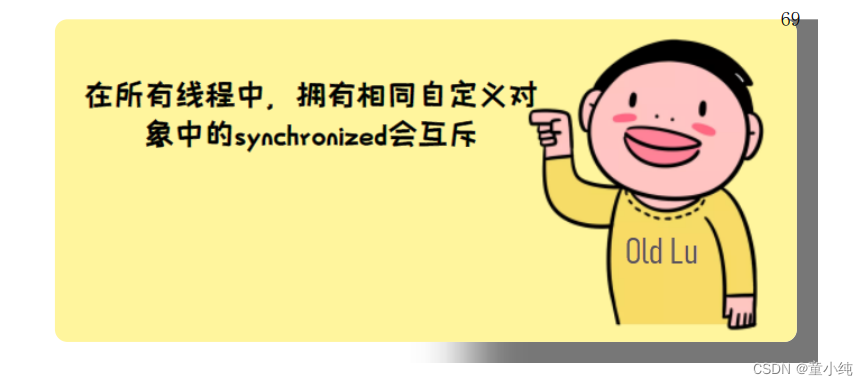 语法结构:
语法结构:
synchronized(自定义对象){
//同步代码
}
/**
* 定义销售员工类
*/
class Sale{
private String name;
public Sale(String name){
this.name = name;
}
/**
* 领取奖金
*/
synchronized public static void money(){
try {
System.out.println(Thread.currentThread(). getName() + " 被领导表扬");
Thread.sleep(500);
System.out.println(Thread.currentThread().getName() + " 拿钱");
Thread.sleep(500);
System.out.println(Thread.currentThread().getName() + " 对公司表示感谢");
Thread.sleep(500);
System.out.println(Thread.currentThread().getName() + " 开开心心的拿钱走人");
} catch (InterruptedExceptione) {
e.printStackTrace();
}
}
}
class Programmer{
private String name;
public Programmer(String name){
this.name = name;
}
/**
* 打开电脑
*/
synchronized public void computer(){
try {
System.out.println(this.name + " 接通电源");
Thread.sleep(500);
System.out.println(this.name + " 按开机按键");
Thread.sleep(500);
System.out.println(this.name + " 系统启动中");
Thread.sleep(500);
System.out.println(this.name + " 系统启动成功");
} catch (InterruptedException e) {
e.printStackTrace();
}
}
/**
* 编码
*/
synchronized public void coding(){
try {
System.out.println(this.name + " 双击Idea");
Thread.sleep(500);
System.out.println(this.name + " Idea启动完毕");
Thread.sleep(500);
System.out.println(this.name + " 开开心心的写代码");
} catch (InterruptedException e) {
e.printStackTrace();
}
}
/**
* 去卫生间
*/
public void wc(){
synchronized ("suibian") {
try {
System.out.println(this.name + " 打开卫生间门");
Thread.sleep(500);
System.out.println(this.name + " 开始排泄");
Thread.sleep(500);
System.out.println(this.name + " 冲水");
Thread.sleep(500);
System.out.println(this.name + " 离开卫生间");
} catch (InterruptedException e) {
e.printStackTrace();
}
}
}
/**
* 领取奖金
*/
public void money(){
synchronized (Programmer.class) {
try {
System.out.println(this.name + " 被领导表扬");
Thread.sleep(500);
System.out.println(this.name + " 拿钱");
Thread.sleep(500);
System.out.println(this.name + " 对公司表示感谢");
Thread.sleep(500);
System.out.println(this.name + " 开开心心的拿钱走人");
} catch (InterruptedException e) {
e.printStackTrace();
}
}
}
}
class Manager{
private String name;
public Manager(String name){
this.name = name;
}
public String getName(){
return this.name;
}
/**
* 敬酒
*/
public void cheers(String mName,String eName){
try {
System.out.println(mName + " 来到 " + eName + " 面前");
Thread.sleep(500);
System.out.println(eName + " 拿起酒杯");
Thread.sleep(500);
System.out.println(mName + " 和 " + eName + " 干杯");
} catch (InterruptedException e) {
e.printStackTrace();
}
}
}
/**
* 打开电脑的工作线程
*/
class Working1 extends Thread{
private Programmer p;
public Working1(Programmer p){
this.p = p;
}
@Override
public void run() {
this.p.computer();
}
}
/**
* 编写代码的工作线程
*/
class Working2 extends Thread{
private Programmer p;
public Working2(Programmer p){
this.p = p;
}
@Override
public void run() {
this.p.coding();
}
}
/**
* 去卫生间的线程
*/
class WC extends Thread{
private Programmer p;
public WC(Programmer p){
this.p = p;
}
@Override
public void run() {
this.p.wc();
}
}
/**
* 程序员领取奖金
*/
class ProgrammerMoney extends Thread{
private Programmer p;
public ProgrammerMoney(Programmer p){
this.p = p;
}
@Override
public void run() {
this.p.money();
}
}
/**
* 销售部门领取奖金
*/
class SaleMoneyThread extends Thread{
private Sale p;
public SaleMoneyThread(Sale p){
this.p = p;
}
@Override
public void run() {
this.p.money();
}
}
/**
* 敬酒线程类
*/
class CheersThread extends Thread{
private Manager manager;
private String name;
public CheersThread(String name,Manager manager){
this.name = name;
this.manager = manager;
}
@Override
public void run() {
synchronized (this.manager) {
this.manager.cheers(this.manager.getName() , name);
}
}
}
public class TestSyncThread {
public static void main(String[] args)
{
Manager manager = new Manager("张三丰");
new CheersThread("张三",manager).start();
new CheersThread("李四",manager).start();
}
}死锁及解决方案
死锁的概念
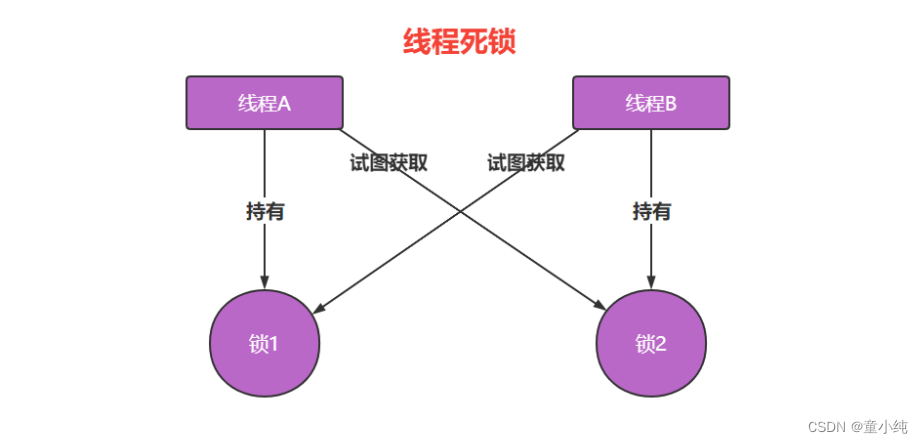
“死锁”指的是: 多个线程各自占有一些共享资源,并且互相等待其他线程占有的资 源才能进行,而导致两个或者多个线程都在等待对方释放资源,都 停止执行的情形。
某一个同步块需要同时拥有“两个以上对象的锁”时,就可能会发 生“死锁”的问题。比如,“化妆线程”需要同时拥有“镜子对象”、 “口红对象”才能运行同步块。那么,实际运行时,“小丫的化妆 线程”拥有了“镜子对象”,“大丫的化妆线程”拥有了“口红对象”, 都在互相等待对方释放资源,才能化妆。这样,两个线程就形 成了互相等待,无法继续运行的“死锁状态”。
死锁案例演示
/**
* 口红类
*/
class Lipstick{
}
/**
* 镜子类
*/
class Mirror{
}
/**
* 化妆线程类
*/
class Makeup extends Thread{
private int flag; //flag=0:拿着口红。 flag!=0:拿着镜子
private String girlName;
static Lipstick lipstick = new Lipstick();
static Mirror mirror = new Mirror();
public Makeup(int flag,String girlName){
this.flag = flag;
this.girlName = girlName;
}
@Override
public void run() {
this.doMakeup();
}
/**
* 开始化妆
*/
public void doMakeup(){
if(flag == 0){
synchronized (lipstick){
System.out.println(this.girlName+" 拿着口红");
try {
Thread.sleep(1000);
} catch (InterruptedException e) {
e.printStackTrace();
}
synchronized (mirror){
System.out.println(this.girlName+" 拿着镜子");
}
}
}else{
synchronized (mirror){
System.out.println(this.girlName+" 拿着镜子");
try {
Thread.sleep(2000);
} catch(InterruptedException e) {
e.printStackTrace();
}
synchronized (lipstick){
System.out.println(this.girlName+" 拿着口红");
}
}
}
}
}
public class DeadLockThread {
public static void main(String[] args) {
new Makeup(0,"大丫").start();
new Makeup(1,"小丫").start();
}
}死锁问题的解决
死锁是由于 “同步块需要同时持有多个对象锁造成”的,要解决这个 问题,思路很简单,就是:同一个代码块,不要同时持有两个对象 锁。
/**
* 口红类
*/
class Lipstick{
}
/**
* 镜子类
*/
class Mirror{
}
/**
* 化妆线程类
*/
class Makeup extends Thread{
private int flag; //flag=0:拿着口红。 flag!=0:拿着镜子
private String girlName;
static Lipstick lipstick = new Lipstick();
static Mirror mirror = new Mirror();
public void setFlag(int flag) {
this.flag = flag;
}
public void setGirlName(String girlName)
{
this.girlName = girlName;
}
@Override
public void run() {
this.doMakeup();
}
/**
* 开始化妆
*/
public void doMakeup(){
if(flag == 0){
synchronized (lipstick){
System.out.println(this.girlName+" 拿着口红");
try {
Thread.sleep(1000);
} catch(InterruptedException e) {
e.printStackTrace();
}
}
synchronized (mirror){
System.out.println(this.girlName+" 拿着镜子");
}
}else{
synchronized (mirror){
System.out.println(this.girlName+" 拿着镜子");
try {
Thread.sleep(2000);
} catch(InterruptedException e) {
e.printStackTrace();
}
}
synchronized (lipstick){
System.out.println(this.girlName+" 拿着口红");
}
}
}
}
public class DeadLockThread {
public static void main(String[] args) {
Makeup makeup = new Makeup();
makeup.setFlag(0);
makeup.setGirlName("大丫");
Makeup makeup1 = new Makeup();
makeup1.setFlag(1);
makeup1.setGirlName("小丫");
makeup.start();
makeup1.start();
}
}死锁问题的解决
死锁是由于 “同步块需要同时持有多个对象锁造成”的,要解决这个 问题,思路很简单,就是:同一个代码块,不要同时持有两个对象 锁。
/**
* 口红类
*/
class Lipstick{
}
/**
* 镜子类
*/
class Mirror{
}
/**
* 化妆线程类
*/
class Makeup extends Thread{
private int flag; //flag = 0 :拿着口红,flag != 0 :拿着镜子
private String girlName;
static Lipstick lipstick = new Lipstick();
static Mirror mirror = new Mirror();
public Makeup(int flag,String girlName){
this.flag = flag;
this.girlName = girlName;
}
@Override
public void run() {
this.doMakeup();
}
/**
* 开始化妆
*/
public void doMakeup(){
if(this.flag == 0){
synchronized (lipstick){
System.out.println(this.girlName+" 拿着口红");
try {
Thread.sleep(1000);
} catch(InterruptedException e) {
e.printStackTrace();
}
}
synchronized (mirror){
System.out.println(this.girlName+" 拿着镜子");
}
}else{
synchronized (mirror){
System.out.println(this.girlName+" 拿着镜子");
try {
Thread.sleep(2000);
} catch(InterruptedException e) {
e.printStackTrace();
}
}
synchronized (lipstick){
System.out.println(this.girlName+" 拿着口红");
}
}
}
}
public class DeadLockThread {
public static void main(String[] args) {
new Makeup(0,"小丫").start();
new Makeup(1,"大丫").start();
}
}线程并发协作(生产者/消费者模式)
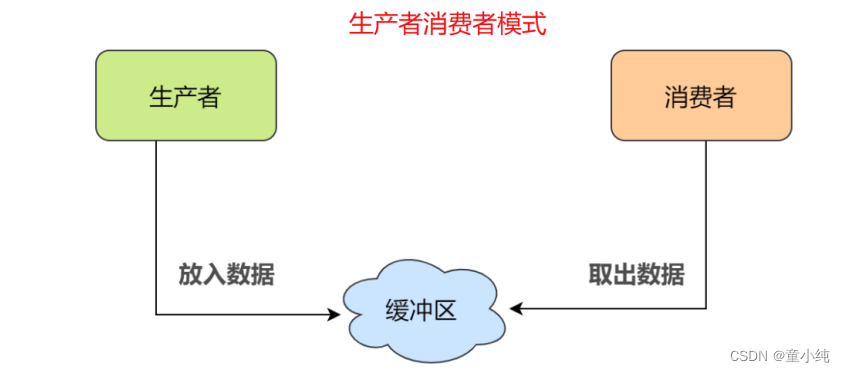
多线程环境下,我们经常需要多个线程的并发和协作。这个时候, 就需要了解一个重要的多线程并发协作模型“生产者/消费者模式”。
角色介绍
什么是生产者?
生产者指的是负责生产数据的模块(这里模块可能是:方法、对 象、线程、进程)。
什么是消费者?
消费者指的是负责处理数据的模块(这里模块可能是:方法、对 象、线程、进程)。
什么是缓冲区?
消费者不能直接使用生产者的数据,它们之间有个“缓冲区”。生 产者将生产好的数据放入“缓冲区”,消费者从“缓冲区”拿要处理 的数据。
缓冲区是实现并发的核心,缓冲区的设置有两个好处:
1 实现线程的并发协作
有了缓冲区以后,生产者线程只需要往缓冲区里面放置数据,而 不需要管消费者消费的情况;同样,消费者只需要从缓冲区拿数 据处理即可,也不需要管生产者生产的情况。 这样,就从逻辑 上实现了“生产者线程”和“消费者线程”的分离,解除了生产者与 消费者之间的耦合。
2 解决忙闲不均,提高效率
生产者生产数据慢时,缓冲区仍有数据,不影响消费者消费;消 费者处理数据慢时,生产者仍然可以继续往缓冲区里面放置数据 。
实现生产者与消费者模式
创建缓冲区
/**
* 定义馒头类
*/
class ManTou{
private int id;
public ManTou(int id){
this.id = id;
}
public int getId(){
return this.id;
}
}
/**
* 定义缓冲区类
*/
class SyncStack{
//定义存放馒头的盒子
private ManTou[] mt = new ManTou[10];
//定义操作盒子的索引
private int index;
/**
* 放馒头
*/
public synchronized void push(ManTou manTou){
//判断盒子是否已满
while(this.index == this.mt.length){
try {
/**
* 语法:wait(),该方法必须要在 synchronized块中调用。
* wait执行后,线程会将持有的对象锁释放,并进入阻塞状态,
* 其他需要该对象锁的线程就可以继续运行了。
*/
this.wait();
} catch (InterruptedException e){
e.printStackTrace();
}
}
//唤醒取馒头的线程
/**
* 语法:该方法必须要在synchronized块中调用。
* 该方法会唤醒处于等待状态队列中的一个线程。
*/
this.notify();
this.mt[this.index] = manTou;
this.index++;
}
/**
* 取馒头
*/
public synchronized ManTou pop(){
while(this.index == 0){
try {
/**
* 语法:wait(),该方法必须要在synchronized块中调用。
* wait执行后,线程会将持有的对象锁释放,并进入阻塞状态,
* 其他需要该对象锁的线程就可以继续运行了。
*/
this.wait();
} catch (InterruptedException e)
{
e.printStackTrace();
}
}
this.notify();
this.index--;
return this.mt[this.index];
}
}
public class TestProduceThread {
public static void main(String[] args) {
}
}创建生产者消费者线程
/**
* 定义馒头类
*/
class ManTou{
private int id;
public ManTou(int id){
this.id = id;
}
public int getId(){
return this.id;
}
}
/**
* 定义缓冲区类
*/
class SyncStack{
//定义存放馒头的盒子
private ManTou[] mt = new ManTou[10];
//定义操作盒子的索引
private int index;
/**
* 放馒头
*/
public synchronized void push(ManTou manTou){
//判断盒子是否已满
while(this.index == this.mt.length)
{
try {
/**
* 语法:wait(),该方法必须要在 synchronized块中调用。
* wait执行后,线程会将持有的对象锁释放,并进入阻塞状态,
* 其他需要该对象锁的线程就可以继续运行了。
*/
this.wait();
} catch (InterruptedException e) {
e.printStackTrace();
}
}
//唤醒取馒头的线程
/**
* 语法:该方法必须要在synchronized块中调用。
* 该方法会唤醒处于等待状态队列中的一个线程。
*/
this.notify();
this.mt[this.index] = manTou;
this.index++;
}
/**
* 取馒头
*/
public synchronized ManTou pop(){
while(this.index == 0){
try {
/**
* 语法:wait(),该方法必须要在synchronized块中调用。
* wait执行后,线程会将持有的对象锁释放,并进入阻塞状态,
* 其他需要该对象锁的线程就可以继续运行了。
*/
this.wait();
} catch (InterruptedException e) {
e.printStackTrace();
}
}
this.notify();
this.index--;
return this.mt[this.index];
}
}
/**
* 定义生产者线程类
*/
class ShengChan extends Thread{
private SyncStack ss;
public ShengChan(SyncStack ss){
this.ss = ss;
}
@Override
public void run() {
for(int i=0;i<10;i++){
System.out.println("生产馒头:"+i);
ManTou manTou = new ManTou(i);
this.ss.push(manTou);
}
}
}
/**
* 定义消费者线程类
*/
class XiaoFei extends Thread{
private SyncStack ss;
public XiaoFei(SyncStack ss){
this.ss = ss;
}
@Override
public void run() {
for(int i=0;i<10;i++){
ManTou manTou = this.ss.pop();
System.out.println("消费馒头:"+i);
}
}
}
public class ProduceThread {
public static void main(String[] args)
{
SyncStack ss = new SyncStack();
new ShengChan(ss).start();
new XiaoFei(ss).start();
}
}
线程并发协作总结
线程并发协作(也叫线程通信)
生产者消费者模式:
1 生产者和消费者共享同一个资源,并且生产者和消费者之间相互 依赖,互为条件。
2 对于生产者,没有生产产品之前,消费者要进入等待状态。而生 产了产品之后,又需要马上通知消费者消费。
3 对于消费者,在消费之后,要通知生产者已经消费结束,需要继 续生产新产品以供消费。4 在生产者消费者问题中,仅有synchronized是不够的。 synchronized可阻止并发更新同一个共享资源,实现了同步但 是synchronized不能用来实现不同线程之间的消息传递(通 信)。
5 那线程是通过哪些方法来进行消息传递(通信)的呢?见如下总 结:
6 以上方法均是java.lang.Object类的方法;
都只能在同步方法或者同步代码块中使用,否则会抛出异常。
OldLu建议 在实际开发中,尤其是“架构设计”中,会大量使用这个模式。 对于初学者了解即可,如果晋升到中高级开发人员,这就是必 须掌握的内容。


